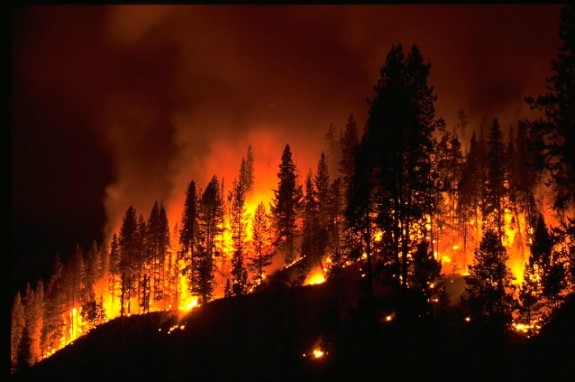Western U.S. Forest Fires Could Double Within 40 Years
In the western U.S., the area burned by forest fires should increase by as much as 100% by 2050

Photo: NOAA
Climate change is making the world warmer and, in many places, dryer, setting the stage for increased forest fire activity across the country. In a new study, scientists with the U.S. Department of Agriculture’s Forest Service say that the amount of land affected by forest fires in the U.S. is expected to increase by at least 50 percent but maybe as much as 100 percent by 2050—a doubling of burned area within less than 40 years.
In the study, led by meteorologist Yongqianq Liu, the researchers say that, more than just responding to a warming world, forest fires actually stoke themselves over the long term. By releasing carbon dioxide to the atmosphere, forest fires increase the likelihood of future fires. According to earlier research forest fires account for about a third of global carbon dioxide emissions. Some of this carbon dioxide will eventually get pulled back out of the atmosphere by plants regrowing in the burned region. But in the short term, say the scientists, the carbon dioxide is an important part of the amplified greenhouse effect.
According to the study, smoke streaming from fires can actually make the area under the cloud colder, because smoke in the air reflects sunlight. That might seem like a silver lining to the ash cloud. But the smoke also suppresses rain, increasing the potential for drought. So, really, it’s not much of a silver lining after all.
In the end, the scientists say that climate change is going to make forest fires worse, and it seems that the fires themselves will encourage this trend.
More from Smithsonian.com:
Fires Are Escaping Our Ability to Predict Their Behavior
Watch Out: This Year’s Fire Season Will Be Another Bad One for the West
/https://tf-cmsv2-smithsonianmag-media.s3.amazonaws.com/accounts/headshot/smartnews-colin-schultz-240.jpg)
/https://tf-cmsv2-smithsonianmag-media.s3.amazonaws.com/accounts/headshot/smartnews-colin-schultz-240.jpg)